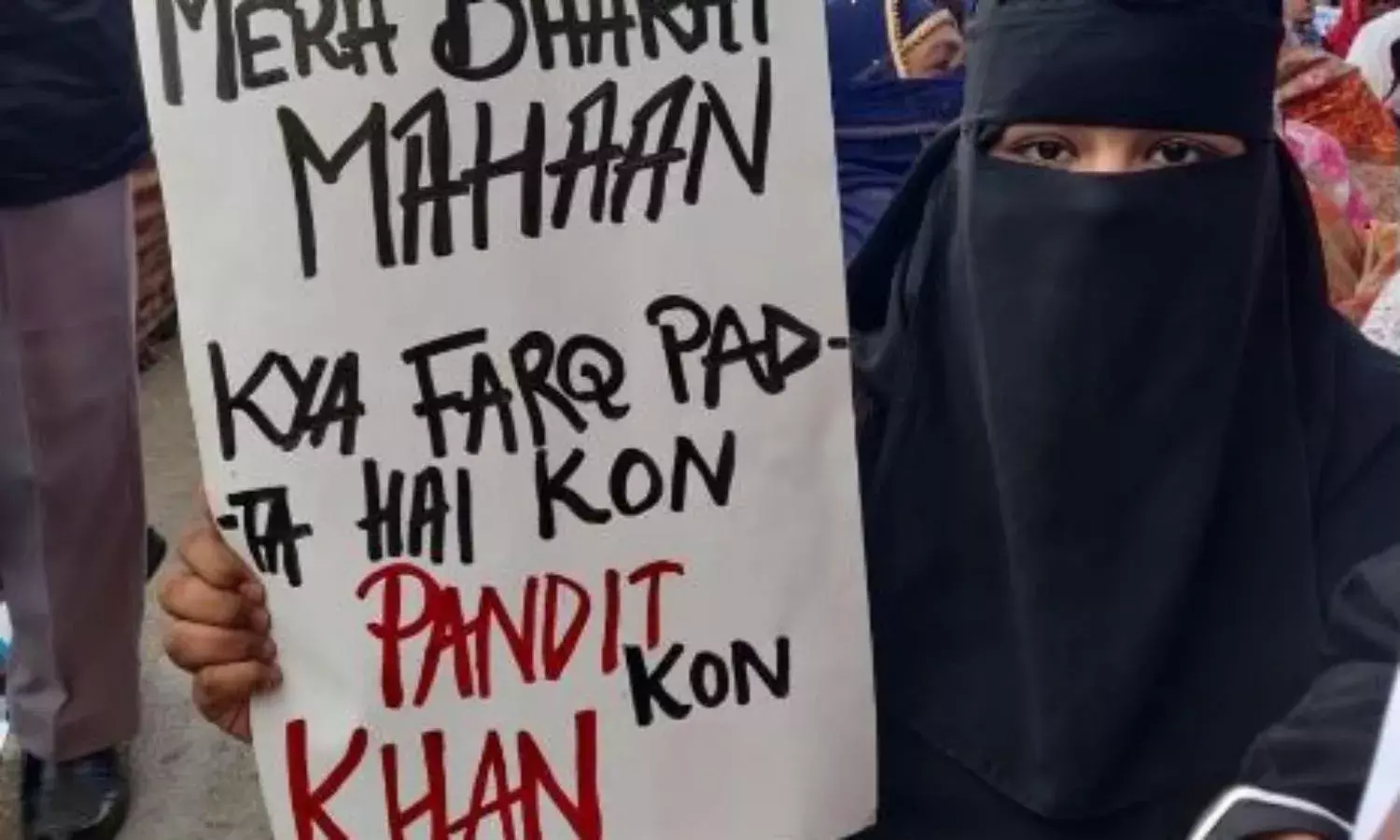Jamia ki Ladkiyan: Gendering the Struggle
A huge leap forward into a truly equal society

It has been a month since the Citizenship Amendment Act was passed, another stroke in a series of anti-Muslim policies pushed through by this government.
It is a refreshing image to see the whole country unite under its tricolour to defeat the expanding saffron agenda of the Hindu right.
The metropolises and student youth sprang into action, and the Constitution - its principles of equality, freedom, and fraternity - has repeatedly become the rallying point.
The government has cracked down with gusto. Police violence, internet shutdowns, media spin - every apparatus has worked overtime to repress the struggle, but we know their struggle is going nowhere. The people are on the streets and for good.
Each and every city and almost all the prominent universities have rallied against this unconstitutional law, led by people in the northeast states and sparked by the police’s ruthless use of force on protesters.
The image of four girls saving one targeted young man from a bunch of bloodthirsty “policemen” has now become an enduring symbol of the protest at the Jamia Millia Islamia University. The other has been the protest of the brave women in Delhi’s Shaheen Bagh.
It is natural that an act which most adversely affects Muslim Indians would face stiff resistance from the community, but what is important to note is that this resistance came first from the women of the community.
This is particularly interesting because this government in its last term tabled the Muslim Women (Protection of Rights on Marriage) Bill, 2018 criminalising triple talaq, a practice of divorce under Sharia law that is heavily biased against the woman.
This was said to have won a huge section of Muslim women voters in favour of the BJP when it was voted back into a second term with a thumping majority.
Three times the government promulgated an ordinance penalising triple talaq, and in July an amended and retabled bill was passed by Parliament, resolving one of the historical struggles of gender equality led by Muslim women since Shah Bano first filed her claim to maintenance in 1978.
A historic moment in the struggle for gender justice in the country, it was also an infringement of the right to religious freedom guaranteed in Articles 25 and 26 of the Constitution.
It was a classic case of how Gayatri Chakravorty Spivak in her seminal essay “Can the Subaltern Speak?” describes colonial laws banning sati - “the white man, saving the brown woman from the brown man”.
While a milestone in gender equality, the intention of a Hindu-right government was probably more inclined towards demonising Muslim men than empowering married Muslim women.
Yet the brave hearts of Jamia and Shaheen Bagh have turned all the equations on their heads.
They declare that the Muslim woman is not a passive entity, that her gender and her religious identity cannot be played against one another, and most importantly to answer Spivak’s question which must be asked every time - She can speak!
She has shown fearlessness and opinions, and amidst the cheers for unity, constitutional rights and communal harmony, the empowering contribution of these women must not remain unsung.
The struggle of the women is particularly interesting for the government’s new citizenship proposals are biased against all women, Muslim or otherwise.
The documents that could help anyone prove their citizenship are largely property or education related, and in our country women are rarely afforded either.
The Muslim woman, when she is at all represented in Bollywood, has always been the sacrificial lamb.
Whether it is Monisha Koirala’s Saira Bano in Mani Ratnam’s Bombay (1995) or Tabu’s powerful Ghazala Meer in Vishal Bharadwaj’s Haider (2014), even in films that tackle difficult topics like communal riots and the Kashmir insurgency, even when their characters begin by showing agency, they tend to eventually portray the Muslim woman as pliable, voiceless and caught in conflict.
This protest brings into the national imagination the image of fearless eyes under demure hijabs, breaks the stereotypes of oppression, and creates a figure of assertion. While the tricolour and the Constitution are being held up as symbols of unity, these women and their struggle are a huge leap forward into a truly equal society.



